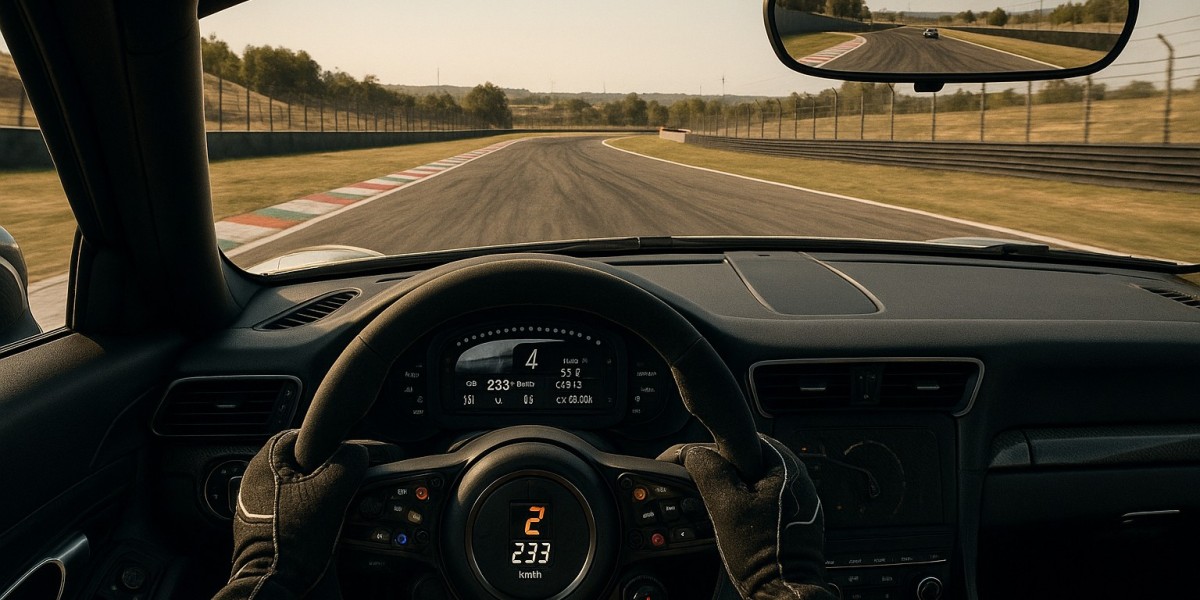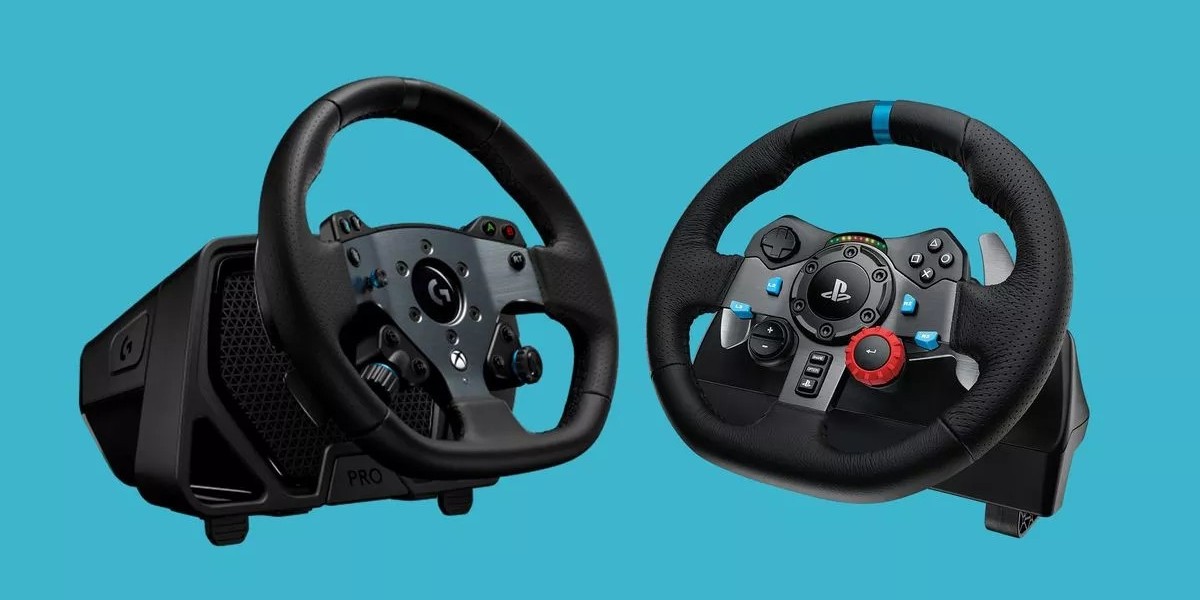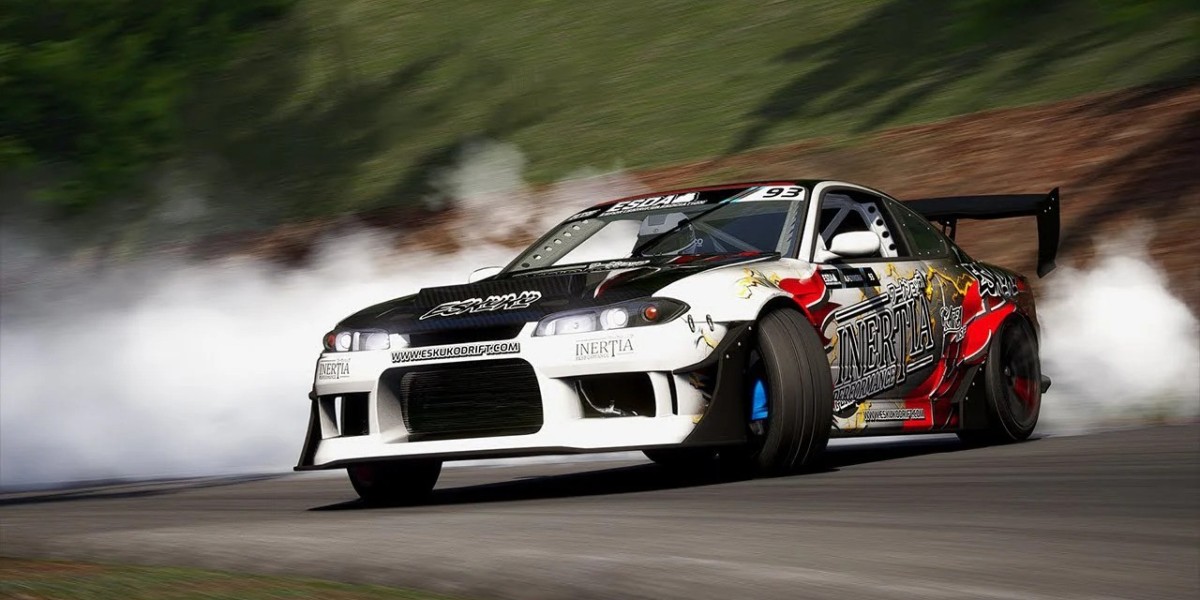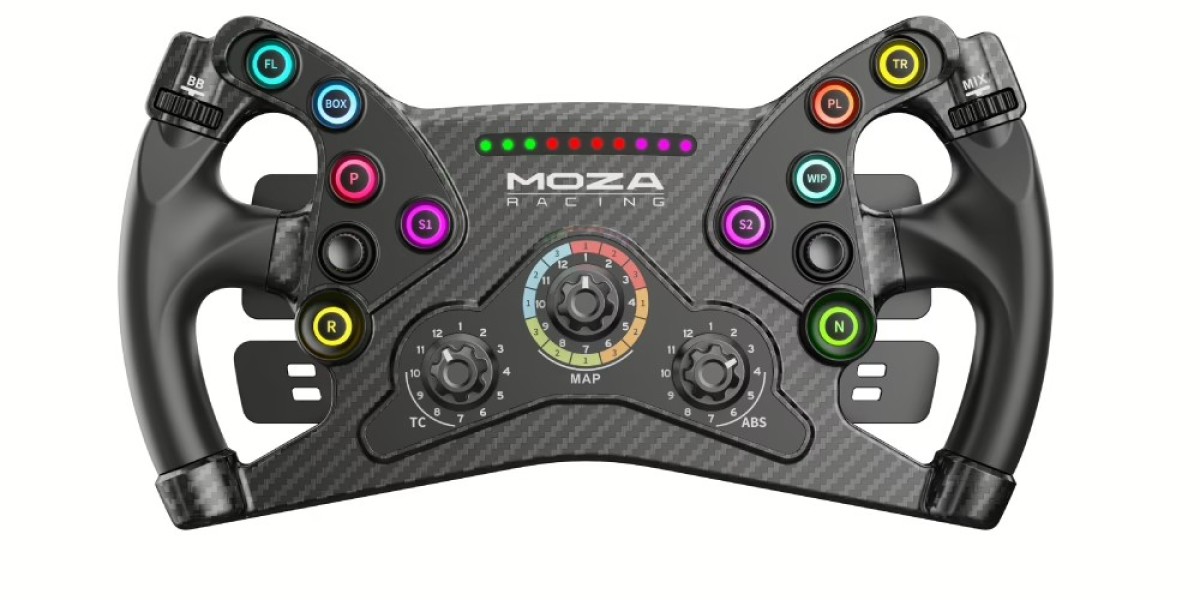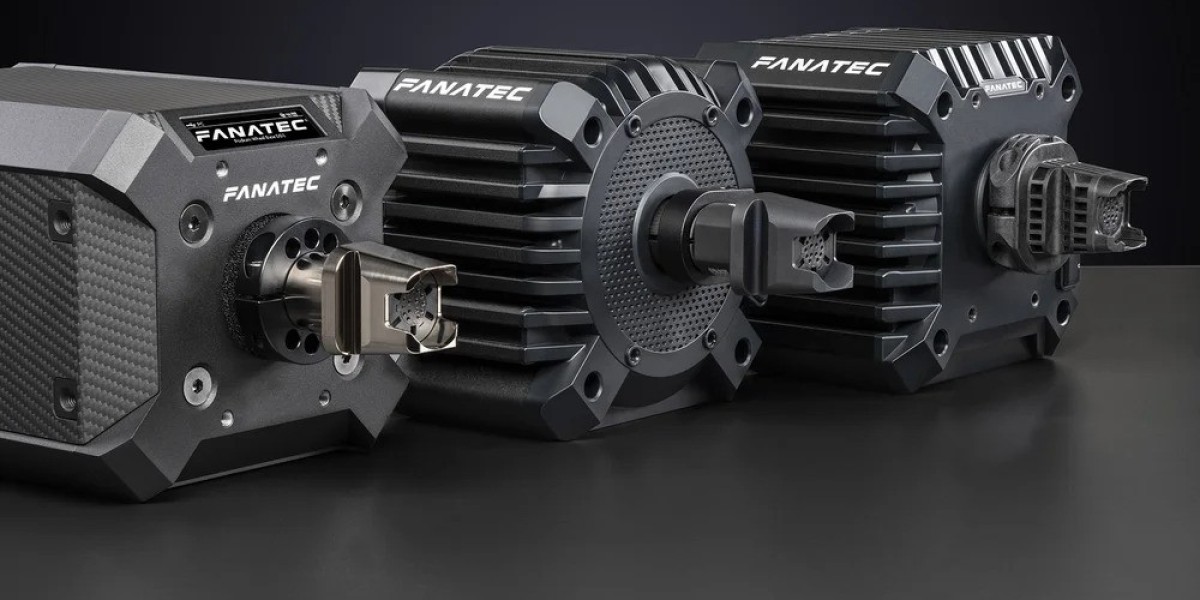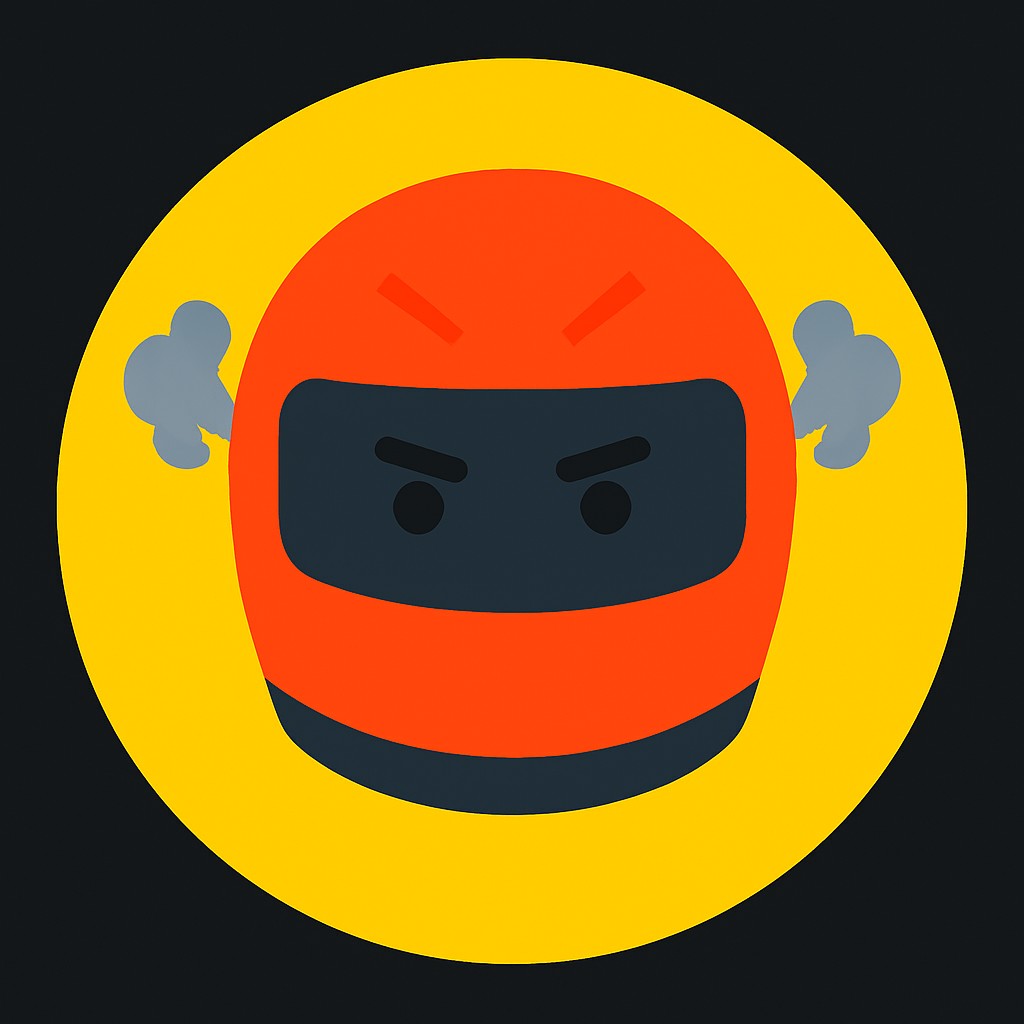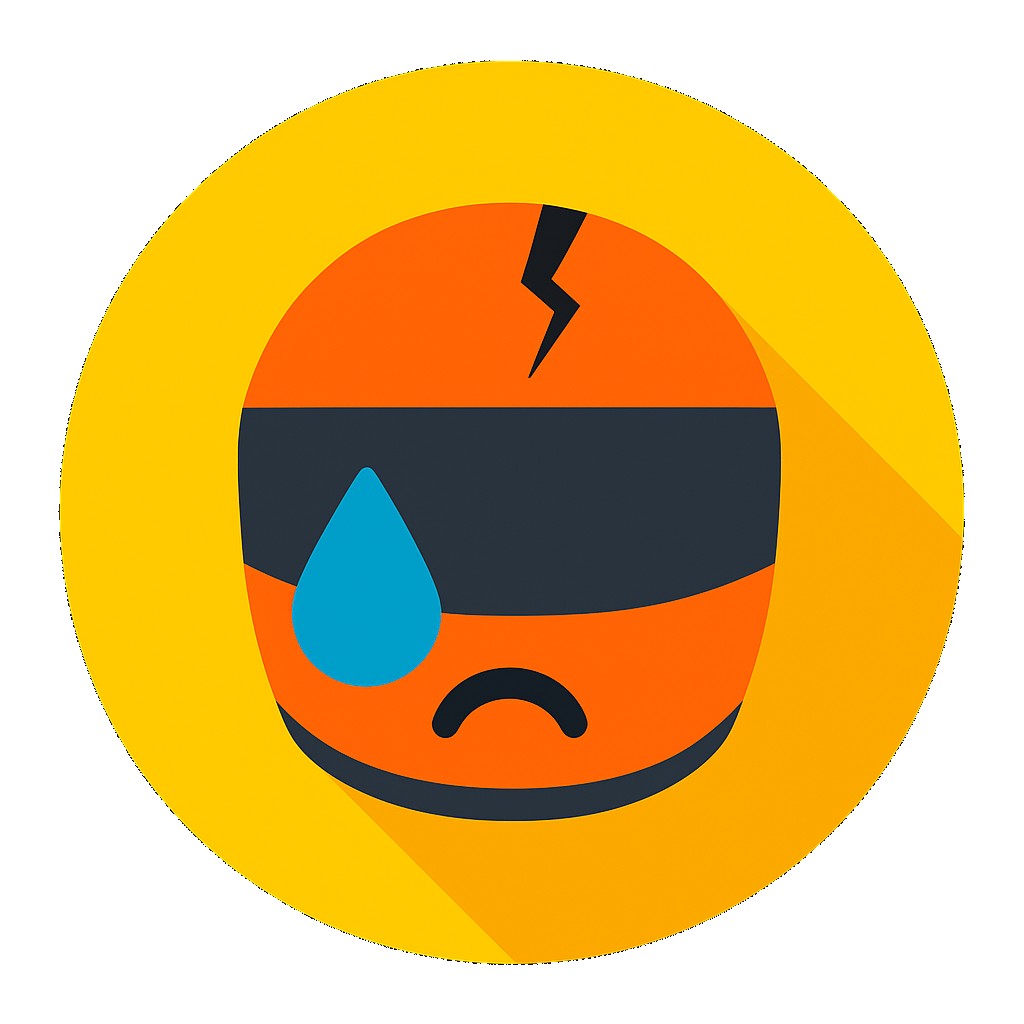What is SimRacing?
SimRacing—short for simulated racing—is not just a game. It’s a virtual motorsport experience that mirrors real-life racing with impressive precision. Imagine sitting in your room but feeling every bump, curve, and oversteer as if you’re behind the wheel of a Formula 1 or GT3 car. That’s the thrill SimRacing delivers.
SimRacing uses advanced physics engines and detailed force feedback systems to mimic real car behavior. It goes far beyond arcade racing games; it’s about braking points, tire wear, racing lines, and milliseconds. Whether you’re using a basic wheel or a full-on direct-drive rig, you’re participating in a global movement that blends gaming, motorsports, and cutting-edge technology.
What makes SimRacing special is how accessible it is—you don’t need a racing license, a million-dollar car, or a pit crew. You can race with professionals online from your bedroom. And as the gear becomes more affordable and powerful, more people are stepping into the virtual driver’s seat than ever before.
Why SimRacing is More Popular Than Ever
Over the past few years, especially post-2020, SimRacing has exploded in popularity. Why? Well, a mix of lockdown boredom, eSports growth, and the rise of YouTube and Twitch streamers brought SimRacing into the limelight. Even real-world racers like Max Verstappen and Lando Norris began streaming their virtual races, boosting credibility and excitement around the sport.
Technology has also caught up. The availability of direct drive wheels, ultra-realistic games like Assetto Corsa Competizione, and VR support has taken immersion to an entirely new level. You don’t just play anymore—you feel the race.
Moreover, the SimRacing community is incredibly vibrant. Thousands of online leagues, Discord groups, modding forums, and tournaments make sure there’s always a race happening somewhere. And with the rise of SimRacing eSports championships backed by major sponsors, it’s no longer a hobby—it’s a career path for some.
Core SimRacing Gear Essentials
Sim Racing Wheelbases
The heart of any SimRacing setup is the wheelbase. This component is what connects your racing wheel to the rest of your rig and delivers the force feedback—letting you feel every traction loss, gear shift, and crash. There are three main types:
Gear-driven: Entry-level and affordable, but with limited realism.
Belt-driven: Offers smoother feedback and a more refined experience.
Direct Drive (DD): The cream of the crop. These use a motor directly attached to the wheel shaft for ultra-precise and powerful feedback.
Brands like Moza and Fanatec specialize in Direct Drive wheels. Moza offers options like the R5 and R12, which bring pro-level force feedback at a mid-range price. Fanatec’s DD1 and DD2 are legendary for their strength and realism.
Choosing the right wheelbase isn’t just about money—it’s about what kind of experience you want. A stronger base will give you more torque and detail, but you’ll also need a stronger rig to hold it.
Pedal Sets and Their Impact on Realism
If the wheel is the brain, the pedals are the heart of your SimRacing rig. Good pedals make or break your performance—literally. The difference between a budget plastic set and a load cell pedal system can be seconds per lap.
Load Cell Pedals are the gold standard. They measure pressure rather than position, just like in real race cars. That means you can trail brake, modulate throttle, and build true muscle memory—skills that transfer to real-world driving.
Moza and Fanatec both offer high-end pedal sets:
Moza CRP Pedals come with adjustable resistance and excellent brake feel.
Fanatec CSL Elite Load Cell kit is a favorite among sim racers for its modularity and reliability.
Pro tip: invest in pedals before you upgrade your wheel. It may sound backward, but consistent braking and throttle control are more impactful on your lap times than a better wheel.
SimRacing Cockpits and Rigs
A powerful wheel and high-quality pedals are only as good as the rig you mount them to. That’s where SimRacing cockpits come in.
Cockpits range from basic wheel stands to fully adjustable aluminum profile rigs. Your choice depends on your budget, space, and how deep you want to dive into this hobby.
Entry-level: Foldable wheel stands like the Next Level Racing Lite. Great for small spaces.
Mid-tier: Sturdy tubular metal frames like GT Omega or Playseat.
High-end: Extruded aluminum profile rigs (8020-style) from Sim-Lab or Trak Racer. These offer ultimate rigidity and customizability.
A stable rig doesn’t just improve immersion—it allows you to drive consistently. Wobbling wheelbases and sliding pedals can ruin lap times and enjoyment. So, while the cockpit isn’t the flashiest part, it’s foundational for serious SimRacers.
Moza Racing Gear Overview
Introduction to Moza Racing
Moza Racing is a relatively new player in the SimRacing world, but it has quickly made a name for itself. Founded by Chinese tech company Gudsen, which also creates high-end camera gear, Moza entered the SimRacing market with a fresh approach—combining sleek design with advanced engineering. What makes Moza stand out? Simplicity, modern aesthetics, and seriously impressive tech packed into compact hardware.
Moza focuses primarily on direct drive wheels, pedals, and accessories. They’ve built a solid ecosystem that competes directly with Fanatec and Thrustmaster, and they’re doing it with some of the most plug-and-play setups in the industry. Their products are not only beginner-friendly but also feature-rich enough to attract seasoned SimRacers.
What’s really impressive is how quickly Moza has scaled. In just a few years, they’ve developed a full suite of racing gear, including the R5 and R12 wheelbases, which offer smooth, strong force feedback, and pedals like the SR-P and CRP models with load cell braking. For anyone entering the market or upgrading from an entry-level wheel, Moza is a serious contender.
Moza Ecosystem: Wheels, Bases, Pedals
Moza’s gear ecosystem is both diverse and growing. Here’s a breakdown of their key products:
Wheelbases:
Moza R5: Aimed at entry-level racers, offering 5.5Nm torque with a compact design.
Moza R12: A mid-tier monster with 12Nm of torque and incredible force feedback accuracy.
Moza R21: For professionals, with a whopping 21Nm of torque and built for long endurance races.
Wheels:
GS GT Wheel: Carbon fiber, magnetic shifters, and a perfect GT car experience.
RS V2 Wheel: More buttons and a beefier feel for those who like endurance and touring car racing.
Pedals:
SR-P Pedals: Basic but responsive pedals great for beginners.
CRP Pedals: Load cell braking, premium materials, and adjustability that rivals the best in the business.
All of Moza’s gear works together seamlessly, thanks to their intuitive software, Moza Pit House, which lets you fine-tune every element from force feedback to dead zones.
Key Benefits and Drawbacks of Moza Gear
Every brand has its highs and lows, and Moza is no exception. Let’s look at what makes it shine—and where it stumbles:
Pros:
Outstanding Force Feedback: Even the R5 provides highly detailed and smooth feedback.
Plug-and-Play Simplicity: No need for tons of driver installations or tweaks.
Sleek Design: Modern, minimalistic aesthetics with durable construction.
Software Control: Moza Pit House offers deep customization options in a user-friendly interface.
Affordable Direct Drive Options: Compared to similar torque levels from competitors, Moza is often cheaper.
Cons:
Limited Console Support: Moza is PC-exclusive, which may deter console players.
Fewer Accessories: Compared to Fanatec, the ecosystem is smaller.
Newer Brand: While they’ve proven reliability so far, they haven’t been battle-tested for as long as others.
In essence, Moza is an exciting, powerful choice, especially for those starting their SimRacing journey on PC. It’s aggressively priced, easy to set up, and incredibly satisfying to use.
Fanatec Racing Gear Overview
A Deep Dive into Fanatec Products
Fanatec is arguably the most recognized brand in SimRacing. They’ve been around for over two decades, starting with basic wheels and evolving into one of the most elite names in the hobby. Today, their gear is used by both casual drivers and professional eSports competitors.
Fanatec’s product range is huge and caters to every skill level. Whether you want a basic CSL DD setup or a high-end Podium DD2 rig, Fanatec has something for you. They also offer a massive variety of add-ons—wheels, pedals, shifters, handbrakes, button boxes—that make customizing your rig a breeze.
Their build quality is top-tier. Most of their products feel premium, with metal construction, smooth bearings, and responsive inputs. Plus, they work with both PC and major consoles, which is a major win for cross-platform racers.
Fanatec’s reputation wasn’t built overnight—it’s earned through years of consistent innovation and user trust.
Fanatec Ecosystem: Clubsport, CSL, Podium
Fanatec’s lineup is divided into three main product families:
CSL (ClubSport Lite):
Budget-friendly without sacrificing too much quality.
Best-known for the CSL DD—an affordable entry into Direct Drive.
CSL pedals are minimalist but upgradeable.
ClubSport:
Mid-range gear for serious sim racers.
Offers the CSW 2.5 base and higher-end pedals like the V3 with load cell braking and rumble motors.
Podium Series:
Top-of-the-line. Used by professionals and sim racing eSports pros.
Includes Podium DD1 and DD2, both known for immense torque and precision.
Podium wheels are loaded with customization, OLED screens, and tactile feedback.
Each series is designed to interconnect. You can start with a CSL DD and upgrade to ClubSport pedals or even a Podium wheel down the line. That flexibility is part of what makes Fanatec such a trusted name.
Pros and Cons of Fanatec Equipment
Pros:
Industry Leader: Fanatec has the largest user base and support ecosystem.
Wide Compatibility: Works on both PC and consoles (PS5, Xbox depending on the base).
Extensive Product Line: Massive variety of wheels, shifters, pedals, and more.
Build Quality: Everything feels premium and robust.
Upgradeable: You can start small and grow your setup over time.
Cons:
Software Can Be Clunky: Fanatec’s drivers and software tools aren’t the most intuitive.
Availability Issues: Products often go out of stock or have long lead times.
Pricey Accessories: You’ll pay a premium for customization and add-ons.
Fanatec is the Apple of SimRacing: sleek, functional, and powerful—but sometimes a bit overpriced and tightly controlled. Still, for those who want a proven, flexible ecosystem, it’s tough to beat.
Moza vs Fanatec: Head-to-Head Comparison
Performance and Force Feedback
When comparing Moza and Fanatec head-to-head, performance is the first area most racers look at—and it’s a tight race. Moza’s R12 and Fanatec’s CSL DD Pro both deliver buttery-smooth, ultra-detailed force feedback, but they do so in slightly different ways.
Moza’s Feel: Crisp, high-torque motors with clean transitions. The force feedback feels very connected to the road and is especially good in open-wheel and GT cars.
Fanatec’s Feel: Slightly more “organic” and nuanced, especially in the higher-end Podium series. It’s less raw power and more finesse.
Where Moza shines is immediacy and ease of setup. Fanatec, on the other hand, has a more mature tuning ecosystem, which rewards those who dig into settings and firmware.
Build Quality and Durability
When it comes to durability, both Moza and Fanatec deliver solid engineering, but their philosophies differ slightly. Fanatec has the advantage of experience, having honed their manufacturing processes over decades. Their gear—especially the Clubsport and Podium series—feels rock solid. You get premium materials like anodized aluminum, carbon fiber, and heavy-duty switches. It’s made to endure years of use, whether for casual racing or competitive eSports.
Moza, though newer to the scene, doesn’t lag behind. Their wheelbases and pedals are built like tanks. The R12, for example, uses a robust aluminum body and high-end internals. The buttons and rotary encoders feel tactile and tight. Even their budget-friendly products are sturdier than some competitors’ mid-range gear.
However, long-term reliability is still a question mark for Moza. Since the brand is young, we don’t yet have multi-year feedback to analyze wear and tear. Fanatec, by contrast, has years of user data showing its gear holds up well—though it’s worth noting some users have reported issues with customer service or random hardware failures over time.
In short, if you’re after proven longevity, Fanatec edges ahead. But Moza’s build quality is exceptional considering its age, and it’s earning trust quickly.
Price vs Value Analysis
Value is where the comparison gets spicy. Moza often undercuts Fanatec on price—especially in the mid-range. Their R5 and R12 wheelbases offer more torque per dollar than Fanatec’s CSL DD, and they bundle accessories like QR adapters and desk clamps for free, which Fanatec typically sells separately.
For example:
Moza R5 bundle (wheelbase, wheel, and pedals) is often priced under $500.
Fanatec CSL DD bundle (similar configuration) can easily run $600–$800.
Where Fanatec justifies its higher pricing is through ecosystem depth and proven compatibility. Want a handbrake, shifter, or fancy GT wheel? Fanatec’s got dozens of options. Moza is catching up but doesn’t yet have the same modular richness.
That said, for PC-only racers, Moza offers arguably the best bang-for-your-buck. You get high performance, sleek design, and easy setup at a lower cost. For console racers or those seeking long-term flexibility, Fanatec might be the smarter investment.
Budget vs High-End SimRacing Setups
What You Get at Different Price Points
SimRacing setups can range from $300 to over $10,000, depending on how far down the rabbit hole you want to go. Here’s a breakdown of what you can expect at each tier:
Budget ($300–$700):
Entry-level wheelbase (Logitech G29, Thrustmaster T248, or Moza R5)
Basic pedal set (plastic, non-load cell)
Foldable wheel stand or desk clamp
Suitable for casual racing and getting your feet wet
Mid-Range ($800–$1,500):
Direct drive wheelbase (Fanatec CSL DD, Moza R12)
Load cell pedals for realistic braking
Dedicated rig (GT Omega, Next Level Racing)
Ideal for sim enthusiasts looking for realism and immersion
High-End ($2,000–$10,000+):
Podium or Moza R21 DD bases
Hydraulic or load cell pedals (Heusinkveld, SimTrecs)
Triple-screen or VR setup
Sim-Lab P1-X or similar 8020 rig
Buttkickers, motion platforms, custom button boxes
Perfect for competitive sim racers or aspiring pros
No matter your budget, you can build a meaningful racing experience. The key is choosing the right components for your goals.
Best Entry-Level SimRacing Gear
Starting out? Here’s a winning setup under $1,000 that balances performance, price, and upgradability:
Wheelbase: Moza R5 or Fanatec CSL DD (5Nm)
Pedals: Moza SR-P or Fanatec CSL pedals (upgrade to load cell later)
Rig: GT Omega Classic or Next Level Racing Lite
Monitor: 1080p 144Hz gaming monitor or your existing TV
Software: Assetto Corsa, Project Cars 2, or iRacing starter pack
This combo gives you a strong foundation without overwhelming complexity. You’ll get real force feedback, precise control, and gear you can upgrade over time.
Pro-Level Setup for Serious SimRacers
If you’re aiming for realism or competition, your setup needs to mirror that ambition. Here’s what a dream rig looks like:
Wheelbase: Moza R21 or Fanatec DD2 (20+Nm torque)
Wheel Rim: GT or Formula style with magnetic shifters and encoders
Pedals: Heusinkveld Ultimate+ or SimGrade hydraulic system
Rig: Sim-Lab P1-X with integrated seat slider
Screens: Triple 32” monitors (1440p) or Pimax VR headset
Audio: Surround sound or headphones with tactile transducers
Accessories: Sequential shifter, analog handbrake, button boxes
With this setup, you’re entering pro territory. You’ll feel every nuance of the track—every bump, tire slip, and curb. If you’re planning to race competitively or stream, this level of immersion is game-changing.
Building Your First SimRacing Rig
Step-by-Step Setup Process
Setting up your first rig can feel overwhelming, but breaking it down makes it manageable. Here’s a step-by-step guide:
Decide on Budget: Know how much you’re willing to spend now and what you might upgrade later.
Choose Your Platform: PC offers the most flexibility and performance. Consoles limit hardware options.
Select Your Wheelbase: For beginners, start with a Moza R5 or CSL DD. They offer the best balance.
Pick Pedals: If possible, get a load cell brake from the start. It makes a huge difference.
Buy or Build a Rig: Start with a simple wheel stand if space is limited. Otherwise, a fixed cockpit is better.
Mount Everything Securely: Ensure zero flex on pedals and wheels. Even minor movement breaks immersion.
Install Software & Drivers: Moza Pit House or Fanatec Control Panel. Set up FFB, calibrate pedals, and check firmware.
Pick Your Sim Title: Try Assetto Corsa for mods or iRacing for competition.
Practice and Fine-Tune: Adjust your seating position, steering angle, and pedal distance for comfort.
Join a Community: Reddit, Discord, or forums like RaceDepartment help you stay connected and troubleshoot issues.
Getting it right might take time, but the result is totally worth it. Every click, twist, and pedal press starts to feel like second nature.
Space Requirements and Ergonomics
One thing many new SimRacers underestimate is the space needed for a proper setup. It’s not just about fitting a wheel on your desk—it’s about ergonomics, immersion, and practicality. Whether you’re working with a bedroom corner or a dedicated sim room, planning your space is crucial for comfort and performance.
Minimum Space Needed:
Wheel Stand Setup: Requires about 4ft x 3ft. Ideal for compact spaces.
Cockpit Rig: Needs around 6ft x 4ft. This allows room for your seat, wheel, pedals, and monitor stand.
Ergonomics Tips:
Seating Position: Try to mimic a real racing car. Your knees should be slightly bent, and your feet should rest comfortably on the pedals.
Monitor Height: Your eyes should be level with the top of your screen to reduce neck strain.
Wheel Height & Angle: Your arms should be at a natural 90-degree bend when gripping the wheel.
Also, consider ventilation. Racing can get intense, and the last thing you want is to overheat during a long stint. Invest in a fan or keep the room cool. If you’re using VR, you’ll need more clearance for movement—and maybe even a floor mat to prevent tripping over wires.
Lastly, lighting can enhance immersion. A well-lit rig with RGB or ambient lighting behind your monitors can reduce eye strain and look amazing in streams or videos.
Recommended Starter Kits
If you’re just starting out, pre-bundled kits are a lifesaver. They take the guesswork out of compatibility and offer good value. Here are a few highly recommended options:
1. Moza R5 Bundle:
Includes R5 Direct Drive wheelbase, ES Steering Wheel, SR-P Pedals.
Great for PC racers wanting to enter the world of Direct Drive without breaking the bank.
2. Fanatec CSL DD Ready2Race Kit:
Comes with CSL DD wheelbase (5Nm), CSL P1 Wheel, and CSL Pedals.
Upgradeable to Load Cell later and compatible with consoles.
3. Logitech G Pro Racing Wheel Bundle:
Combines an all-in-one design with load cell pedals.
Easy setup and solid performance, although less customizable than Fanatec or Moza.
Starter kits are perfect for anyone who wants to unbox, plug in, and start racing the same day. Look for bundles that include everything you need: wheelbase, rim, pedals, and preferably a mount or rig.
Top SimRacing Titles and Platforms
iRacing, Assetto Corsa, and rFactor 2
Your SimRacing gear is only as good as the software it runs. The right sim title will make your wheel feel alive, your pedals responsive, and your races competitive. Here’s a breakdown of the most popular platforms:
iRacing:
Subscription-based with laser-scanned tracks and officially licensed series.
Great for competitive racing and structured leagues.
Realism is top-notch, but the UI is outdated.
Assetto Corsa:
The king of modding. You can drive anything from F1 cars to lawnmowers.
Extremely customizable and great force feedback.
Best with Content Manager and Custom Shaders Patch for visuals and realism.
rFactor 2:
Hardcore physics and tire modeling.
Used by real racing teams for professional training.
Not user-friendly out of the box, but incredibly powerful once mastered.
Each platform caters to different types of racers. If you’re into organized competition, go with iRacing. For offline fun and experimentation, Assetto Corsa can’t be beaten. And if you’re after realism above all else, rFactor 2 is your go-to.
Console vs PC SimRacing
While consoles offer convenience, PC is king in the SimRacing world. Here’s why:
PC Advantages:
Better graphics and performance
More hardware compatibility (Moza, Heusinkveld, etc.)
Access to mods, telemetry tools, and VR support
Wider selection of titles
Console Advantages:
Simplicity and plug-and-play
Lower overall cost
Supports Fanatec, Logitech, and Thrustmaster gear
That said, if you’re serious about SimRacing, building or buying a gaming PC opens up a universe of options. From ultra-wide monitors to data overlays and tuning software, PCs give you full control over your racing experience.
VR vs Triple Screen for Immersion
The battle of immersion often comes down to two options: VR or triple-screen setups. Both offer stunning experiences, but each has its pros and cons.
Triple Screen Setup:
Offers a wide field of view without motion sickness
Easier to multitask or check telemetry
Requires more space and GPU power
VR Headsets (like Quest 3 or Reverb G2):
Delivers unmatched immersion—you feel inside the car
Great depth perception for close racing and overtakes
Can cause discomfort during long sessions
Lower resolution and harder to read in-game HUD
For casual and immersive racers, VR is mind-blowing. For competitive players who need precision and comfort, triple screens remain the gold standard. Some even opt for hybrid setups with VR for hot laps and triples for league races.
Essential SimRacing Accessories
Shifters and Handbrakes
Adding a shifter or handbrake to your rig is like bolting nitrous to a street car—it doesn’t just improve realism, it transforms the experience. These accessories are especially critical for rally, drifting, and vintage racing.
Shifters:
H-pattern: Lets you drive classic cars the way they were meant to be driven.
Sequential: Ideal for rally and touring cars; quick up/down shifts.
Top Picks:
Fanatec ClubSport Shifter SQ V1.5: Dual-mode H-pattern/sequential, all-metal build.
Thrustmaster TH8A: Affordable and reliable, with a flexible mounting system.
Heusinkveld Sequential: Premium feel and adjustability.
Handbrakes:
Especially important in rally and drift sims.
Top choices include:
Fanatec ClubSport Handbrake: Analog precision, compatible with consoles.
Moza HBP Handbrake: Sleek and built for smooth actuation.
Once you start using a shifter or handbrake, you’ll wonder how you ever drove without one. These tools complete the driving puzzle, adding tactile engagement and expanding your racing disciplines.
Sim Racing Seats and Mounts
The right seat turns a gaming chair into a cockpit. Comfort, support, and rigidity all come into play—especially during long races or endurance events.
Types of Seats:
Bucket Seats: Mimic real race car seating; ideal for immersion but can be stiff.
GT-Style Recliners: Provide lumbar support and are adjustable for long sessions.
Popular Models:
Sparco Sprint: FIA approved and sturdy.
GT Omega RS9: Comfortable with side bolsters and high backrest.
Playseat Evolution: Foldable and space-saving, great for casual racers.
Mounting Options:
Direct bolt-on to rigs like Sim-Lab P1-X.
Universal sliders and brackets for adjustability.
Monitor stands can be integrated to complete the cockpit.
Don’t underestimate your seat. It not only affects comfort but also how effectively you use pedals and manage car control.
Audio, Visuals, and Other Enhancements
Immersion isn’t just about what you feel—it’s about what you see and hear. Quality visuals and sound systems elevate SimRacing from a hobby to a sensory experience.
Visuals:
Monitors: 1440p or 4K at 144Hz or higher is ideal. Ultra-wide displays are immersive and space-efficient.
Triple Screens: Offer peripheral vision and realism. NVIDIA Surround or AMD Eyefinity enables multi-monitor gaming.
VR: Total immersion, but ensure your PC can handle the load.
Audio:
Headphones: Noise-canceling gaming headsets like SteelSeries or Audio-Technica models for precision.
Speakers: Surround sound setups can mimic trackside environments.
Buttkickers: These tactile transducers simulate engine rumble, curb vibrations, and road texture through your seat.
Extras:
Wind simulators
Motion rigs
Button boxes and telemetry displays
If you want to turn heads on Twitch or just feel like a real-world driver, investing in your sensory setup pays dividends in realism and enjoyment.
Fine-Tuning for Peak Performance
Software and Firmware Tips
Your gear is only as good as the firmware and software driving it. Proper configuration ensures you’re getting the best out of every lap.
For Moza Users:
Use Moza Pit House to adjust force feedback curves, center force, and dampening.
Update firmware regularly—each release often brings improved smoothness or added features.
For Fanatec Users:
Use the Fanatec Control Panel to fine-tune feedback, vibration, and pedal response.
Make sure drivers are updated—Fanatec often releases critical updates to fix bugs or boost compatibility.
